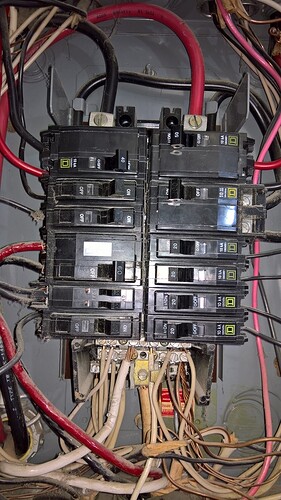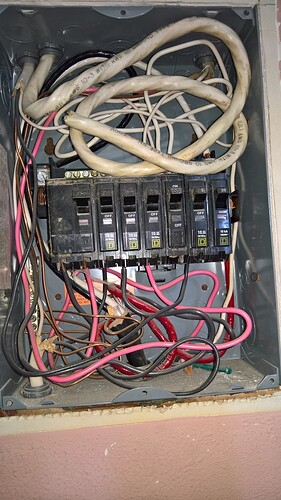No not necessary.
as said, unnecessary.
it is nice to have special circuits for high-power devices though if you ever plan on running more than one at a time (which might happen in a home workshop, say, or even a particularly enthusiastic home office) so that you don’t flip the breaker.
Not necessarily, but people need to keep in mind that a GF ![]() (without a filter) pulls at top end 800 Watts (6.5 to 8 Amps at 100 - 120 Volts).
(without a filter) pulls at top end 800 Watts (6.5 to 8 Amps at 100 - 120 Volts).
You might be able to use a vacuum cleaner on the same circuit, but if you have several other electrical devices on that circuit (with a GF ![]() ) it is likely that you will trip a 15 Amp breaker (most older homes use a 15 Amp versus 20 Amp).
) it is likely that you will trip a 15 Amp breaker (most older homes use a 15 Amp versus 20 Amp).
A licensed electrician (to be safe) can inspect the breaker box and (with all devices, lights and such turned on) measure the Amps being used on each circuit.
this is what i was thinking, especially since a lot of people may use these in a home office; something like a small consumer laser printer can have occasional surge / peak draws of 1600 watts or more, plus a few hundred for a desktop and monitor (maybe a peak of 100W for a small desktop or very beefy laptop). it’s not an issue most of the time but with several multi-hour cuts in the pipeline…
(i don’t think the laser is using too much power or anything fwiw, just pointing out that some people might not realize how easy it can be to trip breakers, especially given the electrical systems we saw when looking at houses…)
You can also purchase what is known as a tong AMP meter and measure this load yourself.
For sure, if you are not comfortable opening the main breaker panel this would not be something you want to do. I can tell you from personal experience it’s really easy to determine the load on an existing circuit as long as everything is on and running. Refrigerators are the hardest to measure as you have to wait until the compressor is running.
Yep, but just as GF ![]() is marketing to non-technical end users, those same users might not want to open up a breaker panel and see something like this:
is marketing to non-technical end users, those same users might not want to open up a breaker panel and see something like this:
or
Thus the recommendation of a licensed electrician or a handy man who knows and understands the behaviors and dangers relating to breaker panels.
Not an issue for me (12 years commercial carpenter and 25 years IT work that requires power to server rooms), but electrical recommendations (for end users) and safety concerns are a ways out of this community forum’s functionality. For those who are comfortable and competent, the AMP meter is a great way to determine loads.
Wow, how do you get a picture of my breaker boxes after I’ve worked on them 
I agree, using a tone meter is not for everyone. The only concern with a licensed electrician is they will want to fix / clean up the mess. Most likely, if someone has a breaker box that looks like one of these, they are going to have problems with over loaded circuits.
So true.
BTW, that is what I have for service (125 AMP limited because the electric company refused to increase the service from the transformer to my house). Thus I had to use an Ammeter to balance the loads across the two 120 single phase service. 3 of the breakers in the second panel are not used because the servers, desktops and normal household appliances and usage just about peg the 125 AMP service.
Really sucks when a bring the table saw and miter saw out and keeps tripping breakers.
I’ve just about completely rewired my work shop. Only 50 AMP main in the shop, so I have to be careful what is running at the same time, so far it’s working very well as long as I think about what I’m doing.

